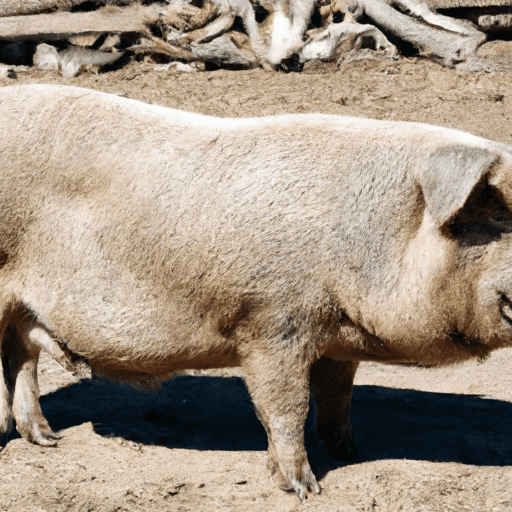Celebrating the Wild Boar: A Culinary Delight
If you’re a food enthusiast looking for a unique and adventurous culinary experience, then allow me to introduce you to the world of wild boar. Tender, flavorful, and undeniably delicious, this game meat offers a palate-pleasing journey that embodies the wild and untamed nature of the animal it comes from. Join me as we explore the taste, uses, nutritional value, and fascinating history of this extraordinary ingredient.
Taste Profile
Wild boar, often referred to as the “forgotten meat,” boasts a distinct flavor profile that sets it apart from domesticated pork. Its meat is lean, intensely flavorful, and slightly sweet, with a hint of nuttiness and an earthy undertone. The unique taste can be attributed to the boar’s varied diet, which often includes acorns, berries, and herbs found in its natural habitat. This diverse diet creates complex flavors that are incredibly appealing to adventurous foodies seeking bold culinary experiences.
Common Uses in Cooking
Wild boar can be used in a myriad of dishes, adding a delightful twist to traditional recipes. Due to its lean nature, it is often favored for slow-cooking techniques to maximize tenderness and flavor development. Here are some popular ways to incorporate wild boar into your culinary repertoire:
Stews and Braises: The rich, robust flavor of wild boar shines in hearty stews and braised dishes. Whether it’s a comforting stew with root vegetables or a delectable ragu served over pasta, the meat lends a rustic and satisfying element to these dishes.
Sausages and Charcuterie: Ground wild boar is perfect for making sausages or incorporating into terrines and pâtés. Its bold flavor pairs exceptionally well with aromatic spices, such as juniper berries, thyme, and rosemary, resulting in charcuterie delights that will leave your taste buds yearning for more.
Roasts and Grilled Cuts: Showcase the tenderness and juiciness of wild boar by preparing it as a roast or grilling it to perfection. Marinating the meat prior to cooking enhances its natural flavors and infuses it with complementary aromatics.
Game Burgers: Looking to elevate your burger game? Wild boar meat makes incredible game burgers that are lean, indulgent, and full of character. Top them with tangy cheeses, caramelized onions, or even a smear of wild berry jam for a truly extraordinary taste experience.
Nutritional Value
Aside from its exceptional taste, wild boar offers several nutritional benefits that make it a smart choice for health-conscious individuals. Compared to traditional pork, wild boar meat is significantly leaner and lower in saturated fat. It is also an excellent source of protein, vitamins, and minerals. The meat is particularly rich in iron, niacin, vitamin B6, and zinc, all of which play crucial roles in maintaining a healthy body and supporting various bodily functions.
History and Interesting Facts
Wild boar has a fascinating history deeply rooted in many culinary traditions across different cultures. It has been a prized game animal for centuries, relished by hunters and feast-goers alike. In ancient times, boar hunts were considered grand events and a symbol of nobility and bravery. The meat’s wild and untamed nature made it a significant culinary delicacy and a testament to the prowess of those who conquered such a formidable beast.
Across Europe, wild boar remains a revered ingredient in traditional dishes. From Italy’s flavorful wild boar ragu, known as “Pappardelle al Cinghiale,” to Germany’s festive wild boar roast with delectable dumplings, each region has their unique take on preparing and savoring this exceptional meat.
Conclusion
Embracing the wild boar on your plate is an invitation to the untamed and bold flavors of the culinary world. Its distinctive taste, versatility in cooking, nutritional value, and rich history make it a captivating and rewarding ingredient to explore. So, the next time you’re craving an extraordinary dining experience, why not let the wild boar transport your taste buds to the untamed wilderness? Be prepared to embark on a remarkable gastronomic adventure like no other.
Wild Boar
Origin: Wild boar (Sus scrofa) is a species of pig native to Europe, Asia, and North Africa. It was introduced to other parts of the world, such as North and South America, Australia, and New Zealand, through human intervention.
Common uses: Wild boar meat is highly valued in culinary traditions across the globe. The meat is known for its rich flavor and tender texture, making it a popular choice for gourmet dishes. Wild boar is commonly used in sausages, stews, roasts, and charcuterie products.
Nutritional benefits: Wild boar is a good source of lean and high-quality protein. It is also rich in essential vitamins and minerals such as thiamine, niacin, riboflavin, vitamin B6, zinc, and selenium. As wild boars often forage for their food, their meat can contain varying amounts of omega-3 fatty acids, depending on their diet.
Unique properties: Wild boar meat has a distinctive flavor compared to traditional pork due to the diet and active lifestyle of wild boars. It tends to be leaner than farm-raised pork and contains less fat and cholesterol. The meat can have a slightly gamey or earthy taste, which some people find appealing.
Historical significance: Wild boar hunting has a long history and cultural significance in many regions. In Europe, wild boars were hunted by early hunter-gatherer societies and later prized by nobility as a symbol of strength and virility. They feature prominently in folklore, literature, and mythology, often representing strength, courage, and a connection to the wild.
Wild boar populations have fluctuated over time due to hunting, habitat loss, and disease. Today, sustainable and regulated hunting practices are in place to protect both wild boar populations and their ecosystems.




Use the share button below if you liked it.
It makes me smile, when I see it.